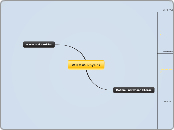によって Ben Iremonger 13年前.
464
WJEC AS Physics
Physics encompasses various concepts related to motion, energy, and charge. Work done by a force is calculated as the product of the force and the distance moved in its direction, measured in joules.

によって Ben Iremonger 13年前.
464

もっと見る
Collisions between free electrons and ions give rise to
electrical resistance, and to a steady drift velocity under a given p.d.,
Superconducting transition temperature: The temperature at which a material, when cooled, loses all its electrical resistance, and becomes super-conducting. Some materials (e.g. copper) never become superconducting however low the temperature.
certain special materials (high temperature
superconductors) have transition temperatures above the boiling
point of nitrogen (–196°C), and can therefore be kept below their
transition temperatures using liquid nitrogen
The resistance, R, of a metal wire of length L and cross-sectional area A is given by R = Ro L / A, in which Ro the resistivity, is a constant (at constant temperature) for the material of the wire.
Unit: ohm x m
recall and use
P=IV
The current flowing through a metal wire at constant temperature is proportional to the p.d. across it.
The p.d. between two points is the energy converted from electrical potential energy to some other form per coulomb of charge flowing from one point to the other. Unit: volt (V) [= JC-1].
current is just number of electrons (times its charge) passing by in a given time (in seconds for amps).
say you have a volume filled with moving electrons (ignore the inner shell electrons since they stay put) if this volume is constantly moving, the current is just the total charge of this moving volume divided by the total time it takes to pass a certain surface. total charge is e*n*A*L where l is the length (this is just total volume*charge density*charge/electron) the time it takes this to move a distance L is the time for all the charges to move across some 'measuring' surface, time=distance/velocity=L/v
Current=total charge/total time=enAL/[L/v]=nAve
Current
understand that electric current is rate of flow of charge;
recall and use the equation
I=ΔQ
Δt
recall that current is measured in ampère (A), where A = Cs-1;
recall that the unit of charge is the coulomb (C), and that an electron's
charge, e, is a very small fraction of a coulomb;
the rate of energy transfer
Efficiency
Efficiency = Useful energy obtained x 100%
Energy input
GPE
This is energy possessed by virtue of position. (e.g. Gravitational PE = mgh). Unit: J
Kinetic
This is energy possessed by an object by virtue of its motion. Unit: J
Ek = 1/2 m(v^2)
Elastic Potential Energy
elastic potential energy is 1/2 kx^2
Spring Constant
The spring constant is the force per unit extension.
Unit: Nm-1.
Hooke's Law
The tension in a spring or wire is proportional to its extension from its natural length, provided the extension is not too great.
Work done by a force is the product of the magnitude of the force and the distance moved in the direction of the force.( W.D. = Fxcos )
Unit: J [= Nm]
Initial velocity u
Final velocity v
Displacement x
Acceleration a
Time taken t
v = u + at
x = (u + v)t
2
x = ut + ½ at ^2
v2 = u2 + 2ax
Displacement Mean SpeedInstantaneous SpeedMean VelocityInstantaneous VelocityMean AccelerationInstantaneous Acceleration
The displacement of a point B from a point A is the shortest distance from A to B, together with the direction. Unit: m.
Mean speed = Total Distance/ Total time taken
Unit: ms-1.
instantaneous speed = rate of change of distance
Unit: ms-1.
Mean velocity = Total Displacement/ Total time taken
Unit: ms-1.
The velocity of a body is the rate of change of displacement.
Unit: ms-1
Mean Acceleration = Change in Velocity/ Time taken
Unit: ms-2.
The instantaneous acceleration of a body is its rate of change of velocity.
Unit: ms-2
The terminal velocity is the constant, maximum velocity of an object when the resistive forces on it are equal and opposite to the ‘accelerating’ force (e.g. pull of gravity).
understand that a body is in equilibrium when the resultant force is
zero and the net moment is zero, and be able to perform simple
calculations.
The centre of gravity is the single point within a body at which the entire weight of the body may be considered to act
The moment (or torque) of a force about a point is defined as the force the perpendicular distance from the point to the line of action of the force,
i.e. moment = F d.
Unit: Nm. [N.B. the unit is not J]
Principle of moments
For a system to be in equilibrium, anticlockwise moments about a point = clockwise moments about the same point
The mass of a body its acceleration is equal to the vector sum of the forces acting on the body. This vector sum is called the resultant force.
A Force
A force on a body is a push or a pull acting on the body from some external body.
Unit: N
Vector
Has a size and a direction
E.g - Force, velocity, acceleration, displacement
Scalar
Has only a size
E.g - density, mass, energy, time, speed, distance,